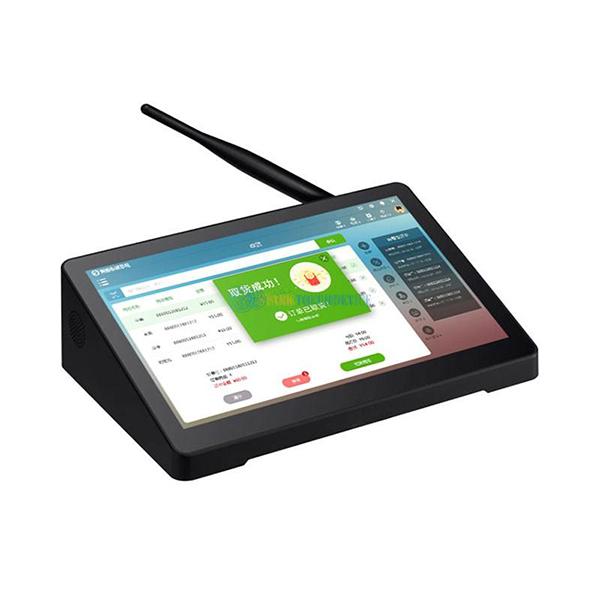Maintenance methods for heat sinks of fanless industrial control computers
Maintenance Methods for Fanless Industrial Computer Heat Sinks
Fanless industrial computers rely on passive cooling systems, where heat sinks play a critical role in dissipating heat. Proper maintenance ensures optimal thermal performance and extends equipment lifespan. Below are detailed techniques for maintaining heat sinks in fanless industrial computing environments.

Cleaning Techniques for Heat Sinks
Dust accumulation on heat sinks reduces thermal conductivity, leading to temperature spikes. Regular cleaning prevents this degradation.
Compressed Air Cleaning
Using a low-pressure air compressor, blow air through the heat sink fins in a direction opposite to natural airflow. This method dislodges trapped dust without physical contact.
- Safety Precautions: Wear protective goggles to prevent debris from entering eyes.
- Frequency: Clean monthly in dusty environments or quarterly in controlled settings.
Soft Brush Cleaning
For finer dust particles, a soft-bristled brush (e.g., anti-static paintbrush) can gently sweep between fins.
- Application: Use in conjunction with compressed air for stubborn buildup.
- Avoidance: Never use metal tools or abrasive materials, which may damage fins.
Vacuum Cleaning
A low-suction vacuum with a brush attachment can remove loose dust from the heat sink surface.
- Limitation: Not suitable for deeply embedded debris; prioritize compressed air first.
Thermal Interface Material (TIM) Inspection and Replacement
Thermal paste or pads between the CPU and heat sink degrade over time, reducing heat transfer efficiency.
Visual Inspection
Check for dry, cracked, or unevenly spread TIM. Signs of degradation include:
- Discoloration (e.g., yellowing or hardening).
- Gaps between the CPU and heat sink.
Replacement Process
- Clean Surfaces: Wipe the CPU and heat sink base with isopropyl alcohol (90%+) and a lint-free cloth.
- Apply New TIM:
- For thermal paste: Apply a pea-sized dot at the center.
- For thermal pads: Ensure the pad matches the CPU dimensions without overhang.
- Reassemble: Secure the heat sink with uniform pressure to avoid air pockets.
Replacement Schedule
Replace TIM every 2–3 years or if temperatures rise unexpectedly. In harsh environments (e.g., high humidity or temperature fluctuations), shorten the interval.
Environmental and Operational Adjustments
Optimizing the operating environment reduces thermal stress on heat sinks.
Temperature and Humidity Control
- Ideal Range: Maintain ambient temperatures between 10°C–35°C (50°F–95°F) and humidity below 70%.
- Mitigation: Use dehumidifiers in humid climates or space heaters in cold environments.
Airflow Management
- Clearance: Ensure 15–20 cm (6–8 inches) of space around the industrial computer for natural convection.
- Obstruction Avoidance: Keep vents free from cables, papers, or equipment.
Load Optimization
- Task Scheduling: Distribute CPU-intensive processes during cooler periods (e.g., nighttime).
- Power Management: Enable energy-saving modes in the BIOS to reduce heat generation during idle periods.
Monitoring and Proactive Maintenance
Implementing real-time monitoring prevents thermal-related failures.
Temperature Sensors
Integrate thermal probes near the CPU and heat sink to track temperatures.
- Alert Thresholds: Set alarms at 70°C (158°F) for CPUs and 65°C (149°F) for heat sinks.
- Logging: Record temperature trends to identify gradual degradation.
Firmware Updates
Regularly update the BIOS to optimize fanless cooling algorithms (e.g., dynamic CPU frequency scaling).
Predictive Maintenance
Analyze temperature logs to predict TIM or heat sink replacement needs. For example, a steady 5°C rise over six months may indicate TIM degradation.
Conclusion
Fanless industrial computer heat sinks require a multi-faceted maintenance approach. Cleaning techniques preserve thermal conductivity, TIM management ensures efficient heat transfer, and environmental adjustments reduce thermal load. By integrating monitoring systems, operators can proactively address issues before they escalate. These practices collectively enhance reliability in industrial automation, medical equipment, and outdoor computing applications where fanless designs are critical.
Our company was founded in 2015 by a group of enthusiastic industrial hardware professionals who share a common passion for Iron Man Tony Stark. With their extensive theoretical knowledge and industry experience, the company was born out of a desire to create a high-tech product company in the computer hardware field, aiming to become the “Iron Man” of the computer industry. We specialize in OEM/ODM services, providing high-quality industrial computer production and research and development. Our product forms include touch display monitors, touch all-in-one machines, ruggedized tablets, various new-generation advertising machines, and specialized computers for harsh environmental applications. Our goal is to help customers achieve business value through innovative and high-quality products.Official website address:https://www.starktouchdevice.com/